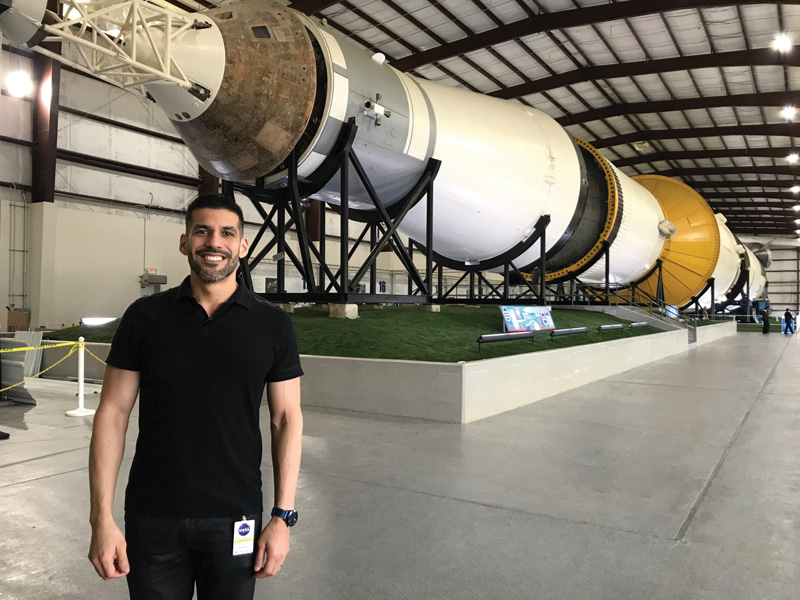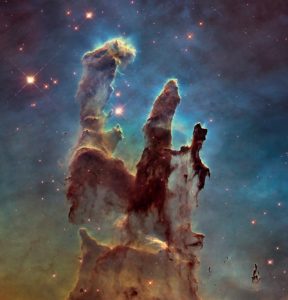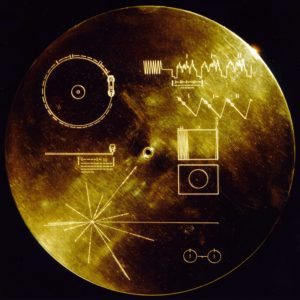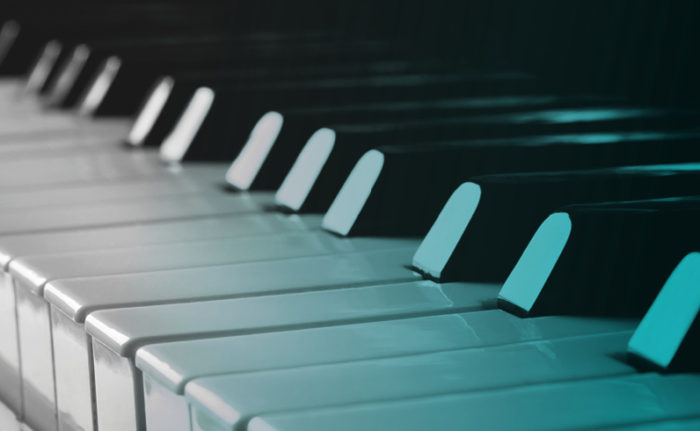On December 5, 7, and 8, the Houston Symphony presents the world premiere of Ad Astra, a new symphony by Composer-in-Residence Jimmy López Bellido (the program also features the internationally renowned virtuoso Gil Shaham in Brahms’ classic Violin Concerto). Get a preview of Jimmy’s exciting and imaginative new work below.
Perhaps no sound is more thrilling to a composer’s ears than that of musicians practicing a new piece before the first rehearsal begins. All at once, imagined music becomes real, passing through the minds and fingers of other human beings for the first time. There was certainly electricity in the air as the orchestra sat down to play through the first movement of a new symphony by Composer-in-Residence Jimmy López Bellido at Jones Hall on September 25. Manning the vibraphone, Principal Percussionist Brian Del Signore softly beat out the words “ad astra” in Morse code, and the orchestra launched into a voyage of musical discovery.

“Ad astra” comes from the Latin motto “per aspera ad astra”—“from adversity to the stars.” Fittingly, Jimmy’s new symphony is about space exploration. “I wanted it to be connected to the city of Houston,” he explained. “I have been fascinated by NASA since I was a child, so I decided to pay homage to the people of NASA with this symphony, which is dedicated to them. Space exploration is Houston’s gift to the world, because it is something that fascinates all of us, all of humanity.”
The Morse code for “per aspera ad astra” was included on the Voyager space probes’ famous Golden Records, which contained greetings and information about Earth for spacefarers that might find them. These words were the spark that ignited Jimmy’s imagination as he began to compose. “‘Ad astra’ is the basic building block of the whole symphony, in a way,” he said. The Morse code rhythms for those two words recur throughout the symphony in various forms. “Some are easy to recognize, while others are more subtle, but they are everywhere.”
A Voyage of Discovery

Jimmy has written many pieces that connect with the world outside the concert hall by telling stories or evoking images, but Ad Astra perhaps surpasses them with its remarkable vividness. “One of the things I did before writing each movement was research,” Jimmy explained. “I’m telling a story that was lived by real people, and I wanted the symphony to be informed by that. It is in five movements. The first four were inspired by iconic programs or missions from NASA’s history: Voyager, Apollo, Hubble, and Challenger. The last movement, Revelation, imagines that Voyager’s message is found by distant lifeforms. All of the other movements are struggle, trying to reach the stars.”
Each movement features ingenious uses of the instruments, some of them rather unusual. “It is a challenge to take the limited number of musicians on the stage and then create the illusion that you have the universe in front of you,” Jimmy noted. Inspired by the missions of the Apollo program, the second movement uses the glass harmonica to evoke the lunar landscape. “I thought of that sound because it gives you this sense of extreme but eerie calm,” he said. The third movement, Hubble, uses a wind machine combined with extended techniques (musicians blow through the mouthpieces of woodwinds and brass instruments and play directly on the bridges of the strings). The orchestra sounds like a machine that refuses to start, a whimsical reference to the space telescope’s early malfunctions. After electronic bleeps and boops from col legno strings, harp, and celesta, a pair of twinkling glockenspiels at last brings the stars into focus.
Memory and Prophecy
But Ad Astra is not simply a celebration of the wonders of the universe; it also acknowledges the dangers of space exploration and commemorates the sacrifices made by the brave astronauts who have made these incredible discoveries possible. The Apollo movement contains a meditative passage reflecting on the tragic Apollo 1 mission, but the fourth movement, Challenger, addresses this theme most powerfully. Rather than compose an elegy, Jimmy has written music that also deals with the publicity and fanfare that preceded—and in part influenced—the decisions that led to the disaster. “It’s about what people were thinking and feeling in their hearts as they were watching this—the confusion that ensued and the time it took for what happened to sink in,” Jimmy said. “This is the ‘per aspera’ part of Ad Astra.”

After the harrowing conclusion of Challenger, the finale, Revelation, begins in a somber, meditative mood. “It’s born from the ashes,” Jimmy says. “I really left everything exposed in that movement. There’s this kind of childlike, very simple melody in it. When I wrote it, I felt somehow embarrassed, because when I expressed those emotions in such a transparent way, I wondered if it was too simple. But there is a certain beauty to simplicity as well. It is hard to write simple music that is good, and one of the simplest things you can have is a well-constructed melody. I felt it was necessary because we required this moment of quiet, of childlike innocence.
“This long, ruminating beginning builds to a return of the ‘ad astra’ rhythm, humanity’s last attempt to communicate with someone from a distant world. That could have been the end of the piece, but then offstage trumpets respond. A dialogue begins, and then the offstage trumpets, representing these distant civilizations, come onto the stage opposite from the trumpets in the orchestra.” The antiphonal effect of different motifs flying throughout the orchestra is sure to prove overwhelming. “I envision that these civilizations come in peace. The whole universe opens up, and we become part of a brotherhood,” Jimmy said.
Ad Astra is the culmination of Jimmy’s three-year residency with the Symphony. With the premiere approaching, he reflected, “The feeling that comes is gratitude to the Houston Symphony and Houston’s audiences for believing in me and for allowing me to be creative. There has to be a lot of faith in what I’m doing for them to bet on a major work like this and to allow me to experiment.” After Ad Astra, Houstonians will have one more chance to hear Jimmy’s music in May when the chorus and orchestra perform his oratorio Dreamers, which was premiered by conductor Esa-Pekka Salonen and the Philharmonia Orchestra in March. Until then, the premiere of Ad Astra gives us the chance to be the first to hear a new work by one of the leading musical voices of our time—an opportunity not to be missed. —Calvin Dotsey
Witness the world premiere performances of Ad Astra this December 5, 6, and 7! Learn more & get tickets.
The Houston Symphony’s Composer-in-Residence and commissioning initiatives are supported in part by Robin Angly & Miles Smith, Barbara J. Burger, Michael J. Shawiak and the “Campaign for a Sound Future” in honor of Winifred Safford Wallace.



